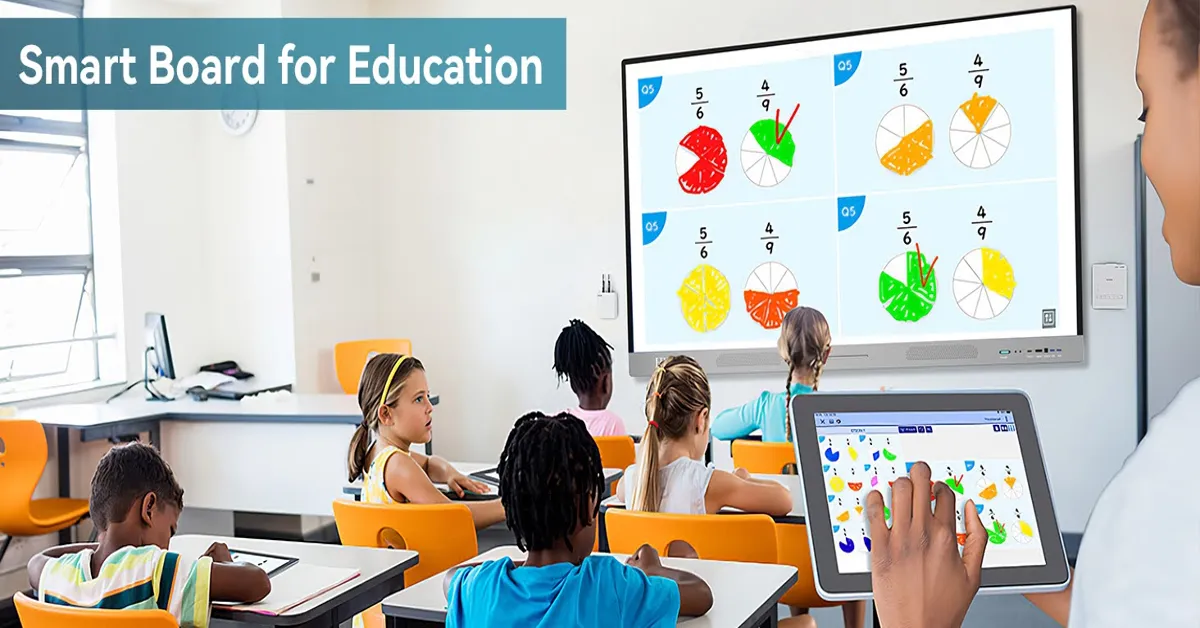In recent years, traditional chalkboards have given way to more advanced educational technologies, among which smart boards have emerged as a transformative tool in modern classrooms. These interactive displays offer a multitude of benefits that enhance teaching and learning experiences.
1. Enhanced Student Engagement
Traditional teaching methods often struggle to capture the attention of today’s tech-savvy students. Smart boards address this challenge by incorporating interactive elements such as touchscreens, multimedia content, and real-time feedback mechanisms. This interactivity not only makes lessons more engaging but also encourages active participation from students.
For instance, students can manipulate images, answer questions, and participate in quizzes directly on the smart board. This hands-on approach fosters a more dynamic learning environment, leading to increased student interest and improved retention of information.
2. Support for Diverse Learning Styles
Every student has a unique learning style, and catering to these differences is crucial for effective education. Smart boards facilitate multimodal learning by integrating visual, auditory, and kinesthetic elements into lessons.
Visual learners benefit from high-resolution images and videos displayed on the smart board. Auditory learners can engage with audio clips and discussions facilitated through the board’s speakers.
Kinesthetic learners have the opportunity to interact physically with the board, reinforcing concepts through touch and movement. This inclusive approach ensures that all students have the opportunity to learn in a manner that suits them best.
3. Real-Time Feedback and Assessment
One of the significant advantages of smart boards is their ability to provide immediate feedback to both students and teachers. Through interactive quizzes, polls, and assessments, educators can gauge student understanding in real time.
This instant feedback allows teachers to identify areas where students may be struggling and adjust their teaching strategies accordingly. Additionally, students can receive prompt clarification on concepts, leading to a more effective learning process.
4. Access to a Wealth of Digital Resources
Smart boards serve as a gateway to a vast array of digital resources that can enrich the learning experience. Teachers can access online databases, educational videos, interactive simulations, and other digital content to supplement traditional teaching materials.
This easy access to diverse resources enables educators to present information in various formats, catering to different learning preferences and enhancing the overall educational experience.
5. Improved Collaboration and Communication
Collaboration is a vital skill in today’s interconnected world. Smart boards promote collaborative learning by allowing multiple students to interact with the board simultaneously.
Group activities such as brainstorming sessions, problem-solving tasks, and collaborative projects can be conducted efficiently using the smart board’s interactive features. This fosters teamwork, communication, and critical thinking among students, preparing them for future collaborative endeavors.
6. Streamlined Lesson Planning and Delivery
The integration of smart boards into the classroom simplifies lesson planning and delivery. Educators can prepare digital lessons that incorporate multimedia elements, interactive activities, and assessments, all within a single platform.
This streamlined approach saves time and ensures that lessons are well-organized and engaging. Additionally, digital lesson plans can be easily updated and shared with students, facilitating a more efficient teaching process.
7. Environmental and Cost Benefits
Traditional classrooms rely heavily on paper-based materials, leading to significant waste and ongoing costs. HKMLC smart board reduce the need for printed handouts, worksheets, and other paper resources.
By digitizing materials, schools can minimize paper usage, contributing to environmental sustainability. Moreover, the long-term cost savings associated with reduced paper consumption and the elimination of certain physical resources make smart boards a financially viable option for educational institutions.
8. Preparation for Future Technological Integration
As technology continues to evolve, preparing students for future digital environments is essential. Smart boards familiarize students with digital tools and interfaces, enhancing their technological literacy.
This exposure equips students with the skills necessary to navigate and utilize technology effectively in their future academic and professional pursuits.
9. Centralized Resource Hub for Teachers
Smart boards provide educators with a centralized platform to access and organize teaching materials. From textbooks and videos to simulations and assessments, all resources can be stored and managed digitally.
This centralization simplifies lesson preparation and ensures that teachers have quick access to the materials they need, enhancing the efficiency and effectiveness of their teaching.
10. Enhanced Classroom Management
Effective classroom management is crucial for maintaining a conducive learning environment. Smart boards contribute to this by providing tools that help in organizing lessons, tracking student progress, and facilitating communication.
Features such as digital attendance tracking, behavior monitoring, and assignment management can be integrated into the smart board system, aiding teachers in maintaining order and focus within the classroom.
Final Thoughts : The Transformative Role of Smart Boards in Education
The integration of smart boards into classrooms offers numerous advantages that enhance the teaching and learning experience. From increased student engagement and support for diverse learning styles to access to digital resources and improved collaboration, smart boards are redefining education in the digital age.
By embracing this technology, educators can create dynamic, inclusive, and efficient learning environments that prepare students for the challenges and opportunities of the future. As educational institutions continue to adopt and integrate the HKMLC interactive whiteboard the potential for transformative change in education becomes increasingly evident.

